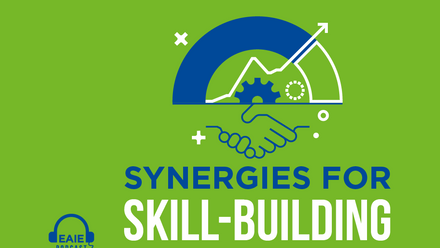6 hurdles to developing Joint Programmes

Joint Programmes* today are one of the main components of the internationalisation strategies of most higher education institutions in Europe, and their significance is growing quickly beyond the continent. Nevertheless, developing this kind of collaborative education initiative can present major challenges due to the ever-changing international context, national legislations, institutional priorities and regulations.
What is the rationale for developing new Joint Programmes? What are the main challenges that practitioners at higher education institutions should tackle, and how? What follows is a list of six of the most common challenges to developing Joint Programmes, as well as some solutions to overcome them.
1) Answering the ‘why’: determining the rationale
Institutions often neglect this question and the related needs analysis when deciding to develop a new Joint Programme. This decision is too often simplistically taken on the basis of the interest of an individual academic or as a response to an offer coming from a prestigious partner.
Before making such a crucial decision, university leadership should ask itself a number of specific questions, like:
- What is the real motivation for the university as a whole to develop a new programme together with a foreign partner in this specific field? Reasons might include visibility, attracting foreign talent, better performance in rankings, recruitment of future doctoral students, demand for graduates with new or different skillsets, or offering a specialisation not available at the home university.
- Will the new programme be attractive to prospective students by the time it’s up and running? Things like negotiations, setup, approval, marketing and recruitment will all take time, meaning the first student cohort will only start the new programme 2–3 years later.
- Will employers in the relevant field need this new profile of graduates in 3-4 years?
- Is the Joint Programme being designed as an internationalised alternative to existing local programmes, or as a stand-alone new programme?
- Is there sufficient internal interest in and support available for the initiative?
2) Choosing the right partner(s)
Even if the need for a new programme has been identified, and even if the internal interest and support are confirmed, the success of a new Joint Programme can largely hinge on your choice of partner. Some key things to look for in a good partner include:
- A shared or compatible rationale for participating in the programme
- Support from the entire institution and its faculty, as opposed to a single or small number of academics
- Adequate quality of the programme offered by the partner institution (because even excellent institutions have their weak sides)
- Compatibility of structures (in particular the academic calendar and nominal duration of the studies), regulations and language policies
- Interest among students and employers in the partner institution’s country
3) Defining the structure
Once the need for the new programme has been confirmed and the most suitable partner(s) have been identified, the participating institutions should also consider the national/regional and internal legal constraints to identify the best structure for this specific type of collaboration.
Particular attention should be given to the regulations on the minimum number of credits to be accumulated by students at the ‘home’ and ‘host’ universities in order for both institutions to be able to issue the degrees (or a joint degree when possible). Attention should also be paid to minimum requirements in terms of credits to be allocated to specific basic subjects in both universities.
4) Defining the programme contents
The most successful and attractive Joint Programme are those focusing on complementarity rather than compatibility. In other words, the better the partner institutions can identify how their in-house expertise can complement each other’s existing local programmes, the more relevant and attractive the new programme will be to students and employers.
The most successful and attractive Joint Programmes are those focusing on complementarity rather than compatibility.
For this reason, the starting point in determining course content should be aligning the new learning outcomes with the medium-term needs of the labour market in the partner institutions’ countries. It’s also important to consider possible differences in pedagogical approach between the partner institutions. This exposure to different teaching methods can be a wonderful way of introducing diversity to the programme, or it can be a huge challenge if students are unprepared for it.
5) Define the practicalities in detail
One of the most common reasons for Joint Programme’ eventual failure is the tendency to overlook the many administrative details and the often very different academic environments and requirements of two very different institutions. All these elements should be defined prior to the launching of the programme and formalised in the bilateral/consortium agreement. Some of these elements can include the tuition fees policy, intellectual property rights attached to theses, credit transfer mechanisms, allocation of responsibilities, creation of a Joint Programme committee, teaching staff mobility, extracurricular activities, examinations, mitigation measures, dropouts, and tutoring and mentoring.
6) Ensuring sustainability
Last but not least, be sure to think long-term from the very beginning of the process. Developing and running a new Joint Programme is costly in terms of both time and financial and human resources. All of the above-mentioned elements are de facto part of the sustainability of the programme, because if a single one of them fails at one of the involved institutions, the whole programme will be in jeopardy. In a recent global study on Joint Programme, one third of the respondents stated that they had to discontinue at least one programme due to of lack of sustainability, which shows that the threat is real.
In order to be sustainable, a Joint Programme should be run by committed partners in the entirety of the participating institutions (management, programme directors, academics and administrators), relevant in the mid to long term for all stakeholders, and built on clear and shared rules applied by clearly-identified individuals. All these aspects should be complemented by specific sustainability measures including frequent meetings of the board, active participation of employers (with lectures, internships, master’s thesis, extracurricular activities etc), ensuring internal/external funding, joint marketing efforts and having dedicated structures in place at all participating partner institutions.
* In this article the term ‘Joint Programme’ includes all the collaborative education initiatives with embedded mobility leading to the award of a joint/dual/multiple degree and involving at least two institutions from at least two different countries.





